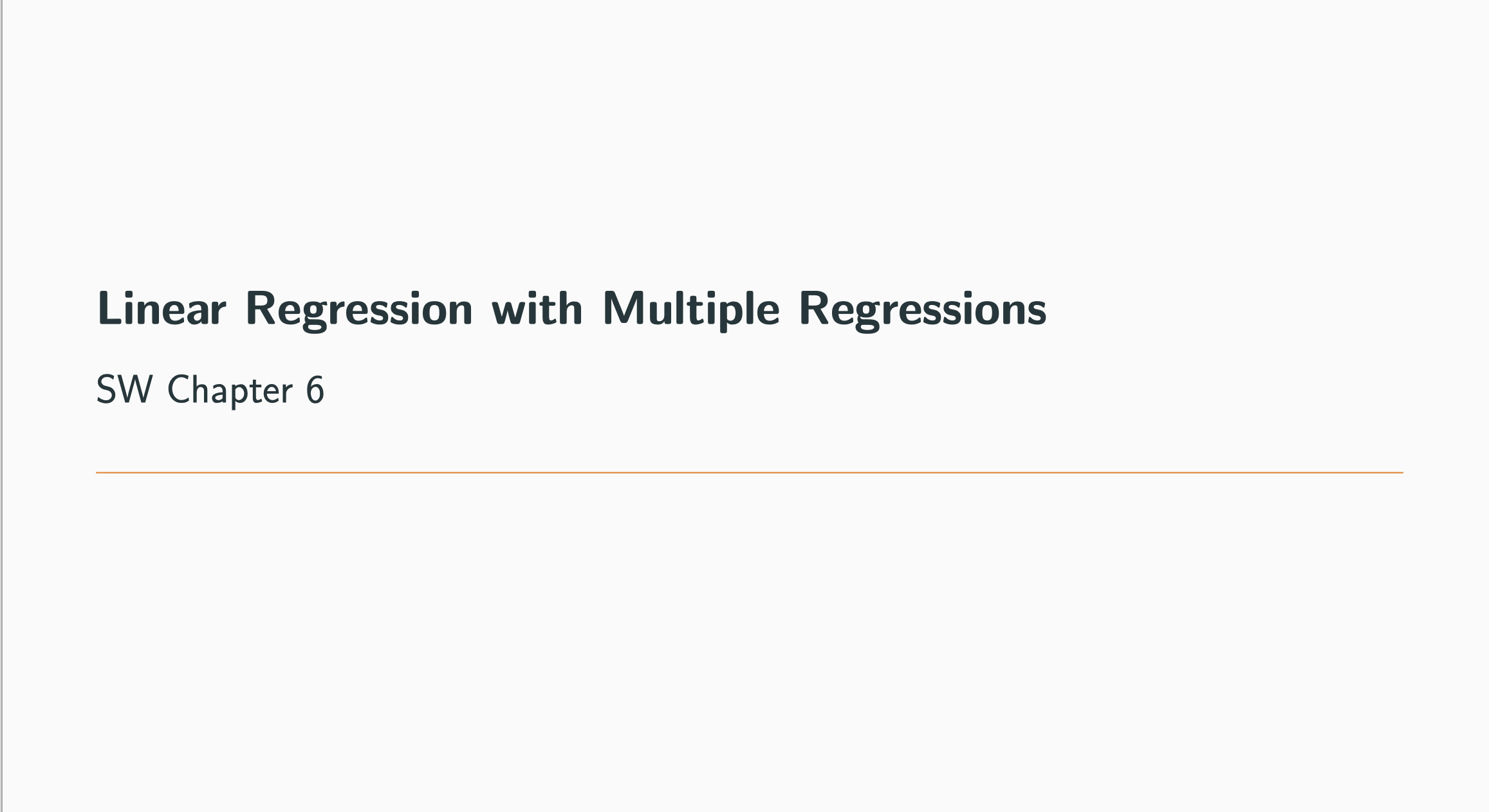Week 6 - Multiple Linear Regression
Overview
Let’s model!
Now, we can build powerful models with heaps of dependent variables. Want to predict wages? Let’s control for education, for experience, for gender, for age, for age squared (yes!). YES. Only our degrees of freedom can hold us back.
Reading Guide
SW 6.1 Omitted Variable Bias
A discussion that connects nicely with our previous discussion of the zero conditional mean discussion and causal inference.
SW 6.3 The OLS Estimator in Multiple Regression
This section doesn’t get into derivation, and neither do we!
SW 6.4 Measures of Fit in Multiple Regression
The only new thing here is a revised
SW 6.5 The Least Squares Assumptions in Multiple Regression
Take the three from univariate regression and add … no multicollinearity. Sorted.
SW 6.6 Distribution of the OLS Estimators in Multiple Regression
Just the intuition, don’t worry about the appendix.
In-class exercises
Download PDF here, which contains regression output for questions (2) - (4)
Exercises
Consider a dataset on earnings in the United States. We are interested in the returns to education - how much an extra year of schooling “buys” you in terms of weekly wages (...as of 1980). You’re also worried about whether one’s education suffers from omitted variable bias.
You estimate two equations:
Based on these results, is 60.21 an overestimate or underestimate of the returns to education? How do you know?
You estimate another equation:
What is the interpretation of the coefficient on
Now, you control for experience and age and estimate the following population regression model:
A one-year increase in age is associated with what change in wages? (mind the squared term)

Finally, because you are worried about omitted variable bias, you include father’s and mother’s education.

Why might parent’s education might directly affect wages?
Which other independent variables do you think parent’s education might affect? Explain.
How did controlling for parent’s education affect the returns to education? The returns to IQ?
Other resources
As requested, slower graphs! Also added a graph on collider bias, the webpage explanation helps there.
— Nick HK (@nickchk) November 29, 2018
These graphs are intended to show what standard causal inference methods actually do to data, and how they work.
This is what controlling for a binary variable looks like: pic.twitter.com/dTZxqY5JxA
